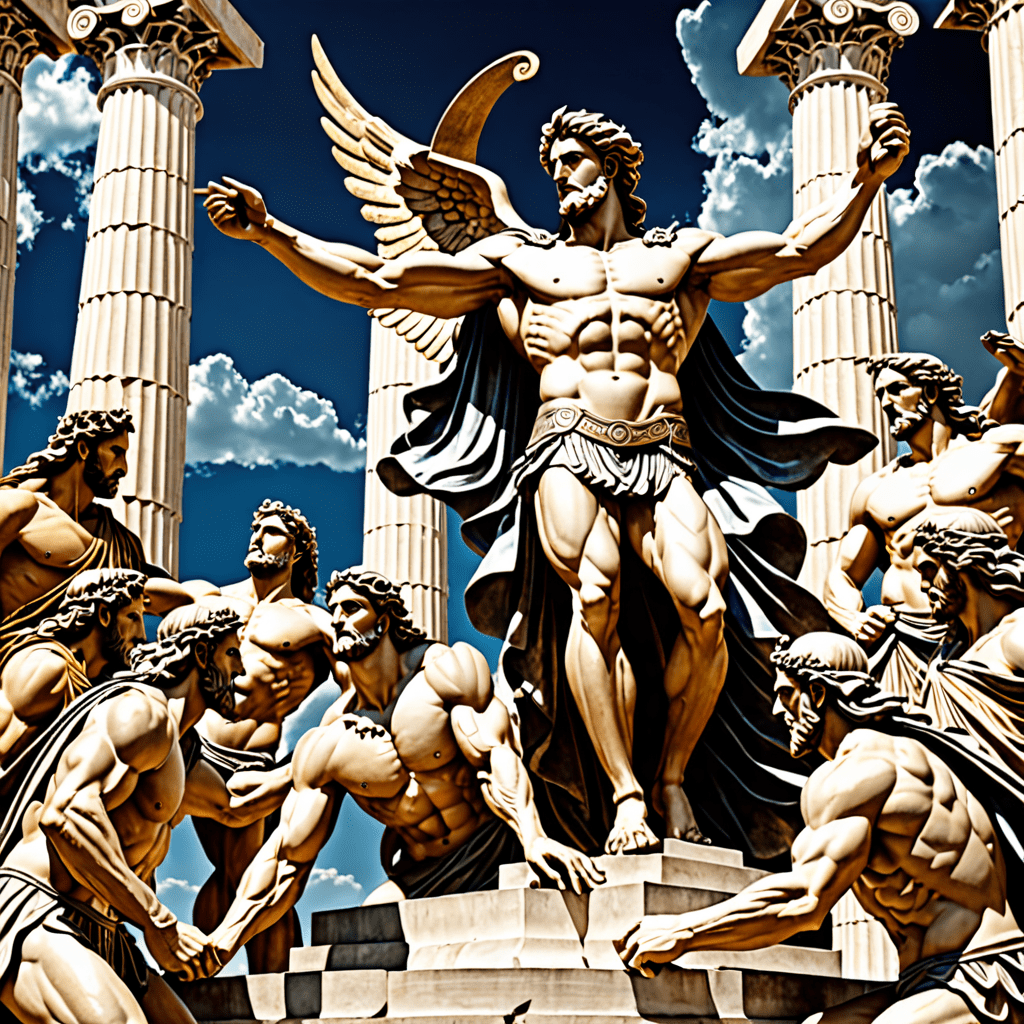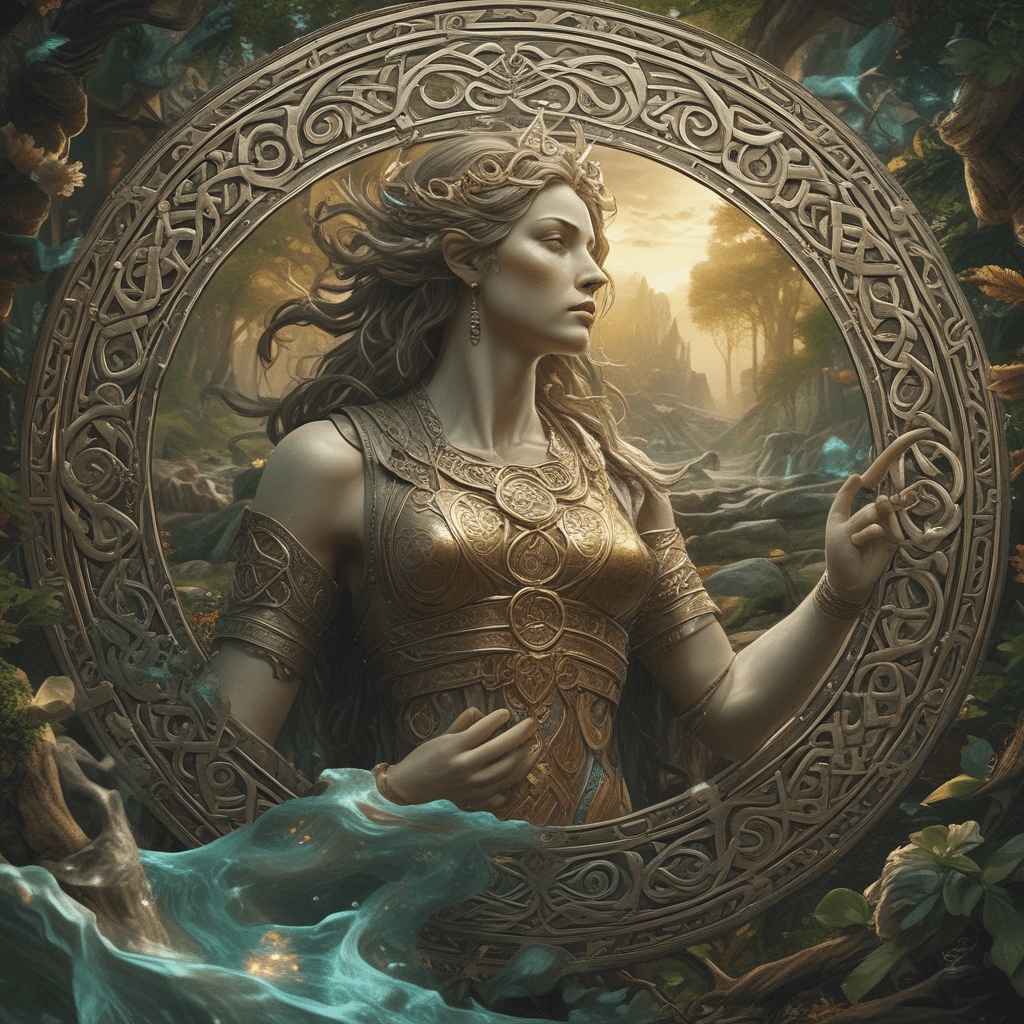Baltic Mythology: The Sacred Symbols of Protection and Guidance
The Baltic region, encompassing countries like Latvia, Lithuania, and Estonia, is steeped in a rich tapestry of myths and legends that have shaped its cultural identity for centuries. Baltic mythology, with its vibrant pantheon of gods and goddesses, offers a fascinating glimpse into the beliefs, values, and aspirations of these ancient peoples. From the awe-inspiring forces of nature to the potent symbols of protection and guidance, Baltic mythology reveals a deep connection between humanity and the cosmos.
1. The Baltic Pantheon: A World of Gods and Goddesses
The Baltic pantheon, like other mythologies, is a complex web of interconnected deities, each with their own unique domain and influence. The most prominent figure is Dievs, the sky god, often depicted as a powerful warrior wielding lightning and thunder. He represents the forces of creation, order, and justice, and is a symbol of the ultimate power in the universe.
Alongside Dievs are a host of other deities who embody various aspects of the natural world. Perkūnas, the thunder god, is the protector of mankind from storms and evil spirits. Laima, the goddess of fate, weaves the threads of destiny, determining the course of each individual's life. Jūratė, the sea goddess, rules over the deep waters and is known for her beauty and wisdom. These are just a few examples of the diverse and captivating figures that populate the Baltic pantheon.
2. The Importance of Symbols in Baltic Belief
Symbols played a crucial role in Baltic mythology, serving as visual representations of abstract concepts, beliefs, and spiritual forces. These symbols were not mere decorative elements but powerful tools used to connect with the divine, seek protection, and understand the workings of the universe. They were woven into everyday life, appearing on clothing, tools, and sacred objects.
The effectiveness of these symbols stemmed from their powerful association with the gods and goddesses they represented. By incorporating these symbols into their lives, people sought to invoke the favor, guidance, and protection of the divine. The symbols served as a bridge between the human world and the realm of the supernatural, allowing people to tap into the vast reservoir of cosmic power.
3. Sun and Moon: Luminous Guardians of the World
The sun and moon hold a central position in Baltic mythology, serving as powerful symbols of light, life, and cosmic order. The sun, often represented by the god Saulė, is associated with warmth, growth, and prosperity. It provides sustenance to the earth, nourishes crops, and brings light to the world. The sun's journey across the sky is seen as a metaphor for the cycle of life, death, and rebirth.
The moon, represented by the goddess Mėnuo, is associated with the feminine principle, the night, and the mysteries of the cosmos. It guides travelers in the darkness, influences the tides, and symbolizes the cyclical nature of time. The sun and moon, together, represent the duality of light and darkness, day and night, and masculine and feminine energies, essential components of the cosmic balance.
4. The Tree of Life: A Nexus of Cosmic Power
The Tree of Life is a ubiquitous symbol in mythology across various cultures, and its presence in Baltic mythology highlights its universal significance. In Baltic mythology, the Tree of Life, often depicted as an oak or a birch, represents the interconnectedness of all things, the link between the heavens, the earth, and the underworld.
It is considered a sacred and mystical entity, embodying the life force of the universe, the source of wisdom and knowledge. Its roots reach deep into the earth, connecting to the realm of ancestors and the underworld, while its branches extend towards the heavens, signifying the connection to the divine. The Tree of Life is a symbol of growth, renewal, and the enduring cycle of life.
5. The Serpent: A Symbol of Wisdom and Transformation
The serpent, a creature often associated with danger and evil in other mythologies, takes on a more complex and nuanced role in Baltic mythology. While it can symbolize destructive forces, it also represents wisdom, knowledge, and the power of transformation.
Serpents are often associated with the earth, the underworld, and the mysteries of life and death. Their ability to shed their skin and emerge renewed symbolizes the process of transformation, growth, and the ability to overcome challenges. The serpent's connection to the earth also highlights its importance in fertility rituals and agricultural practices.
6. The Thunder God Perkūnas: Protector from Storms and Evil
Perkūnas, the thunder god, is one of the most prominent figures in the Baltic pantheon. He is known for his mighty strength, his control over the weather, and his role as a protector of mankind. Often depicted as a fierce warrior wielding a hammer or an axe, Perkūnas embodies the power of storms and the unpredictable forces of nature.
Perkūnas is responsible for bringing both the destructive and beneficial aspects of thunder and lightning. While his storms can cause havoc and destruction, they also bring rain, which nourishes crops and sustains life. Perkūnas is seen as a bringer of justice, striking down those who have wronged others or broken the laws of the gods. He is also believed to protect people from evil spirits, disease, and other misfortunes.
The Baltic people revered Perkūnas as a powerful protector who ensured the survival and well-being of their community. They offered sacrifices to him, prayed for his favor, and incorporated symbols of his power into their daily lives. Thunder and lightning were seen as signs of Perkūnas's presence and a reminder of his power. The sound of thunder was often interpreted as the voice of the god, and people would offer prayers and offerings to appease him and seek his protection.
7. The Earth Goddess Žemyna: Nourisher and Provider
Žemyna, the Earth goddess, represents the fertility and bounty of the land. She is the embodiment of the life-giving power of the earth, providing sustenance and nourishment to all living beings. Like a nurturing mother, Žemyna cares for her children, ensuring that the soil is fertile and the crops flourish. She is often associated with agriculture, nature, and the cycle of life and death.
Žemyna is depicted as a woman adorned with flowers, grains, and other symbols of fertility. She is often seen standing on a field or a mountain, symbolizing her connection to the earth and her power over its bounty. The Baltic people honored Žemyna through rituals and offerings, seeking her blessing for successful harvests and abundant crops. They believed that she had the power to influence the weather, ensure good harvests, and protect the land from harm.
Žemyna's role went beyond providing for physical needs. She was also seen as a provider of spiritual nourishment, nurturing the souls of those who lived in harmony with nature. The earth, in her care, was considered a sacred space, a source of wisdom and inspiration for the Baltic people.
8. The Significance of Amulets and Charms
In Baltic mythology, amulets and charms played a significant role in everyday life. These small objects, often made of metal, wood, or bone, were believed to possess protective powers and could be worn or carried to ward off evil spirits, disease, and other misfortunes. They were imbued with the power of the gods and goddesses they represented, acting as conduits to the divine.
One common amulet was the "Aukštasis kryžius," a stylized cross, symbolizing the power of the sky god Dievs. This amulet was believed to protect people from the forces of chaos and evil. Another popular charm was the "Saulės ratas," a sun wheel, symbolizing the power of the sun god Saulė. This charm was believed to bring good fortune, health, and prosperity.
People would wear or carry amulets and charms during important events, such as births, weddings, and harvests, as a way of invoking the favor of the gods and goddesses. They would also place charms in their homes to protect their families and their possessions. The use of amulets and charms was a reflection of the Baltic belief in the power of symbols and the ability of these objects to connect with the divine.
9. Contemporary Interpretations of Baltic Symbols
The ancient symbols of Baltic mythology continue to hold significance in the contemporary world. They have been integrated into modern art, literature, and design, serving as a reminder of the rich cultural heritage of the Baltic region. The Tree of Life, the Sun Wheel, and other symbols are often incorporated into jewelry, tattoos, and other forms of personal expression.
The contemporary interpretation of Baltic symbols reflects a renewed interest in the region's history and culture. These symbols are seen as a way to connect with the past, to celebrate cultural identity, and to draw inspiration from the ancient wisdom of Baltic mythology.
10. The Enduring Legacy of Baltic Mythology
Although Baltic mythology has evolved and adapted over time, its core beliefs and symbols continue to resonate with the people of the region. It offers a powerful reminder of the importance of nature, the interconnectedness of all things, and the enduring power of the human spirit. The stories, beliefs, and symbols of Baltic mythology provide a rich tapestry of cultural heritage that continues to inspire and guide people today.
FAQ
Q: What is the main difference between Baltic mythology and Norse mythology?
- A: While both share some common themes and concepts, Baltic mythology has its own unique pantheon of gods and goddesses, its own stories and symbols, and a distinct cultural context. Baltic mythology is more closely associated with agriculture and nature, while Norse mythology has a more prominent focus on warfare and heroism.
Q: How is Baltic mythology relevant today?
- A: Baltic mythology provides a rich source of inspiration for artists, writers, musicians, and other creative individuals. It also fosters a sense of cultural identity and pride in the people of the Baltic region.
Q: What are some common symbols in Baltic mythology?
- A: Some common symbols include the Tree of Life, the Sun Wheel, the Thunder God Perkūnas's hammer, and the Earth Goddess Žemyna's flowers and grains.
Q: What is the significance of amulets and charms in Baltic mythology?
- A: Amulets and charms are seen as objects imbued with the power of the gods and goddesses, offering protection and guidance to those who possess them.




